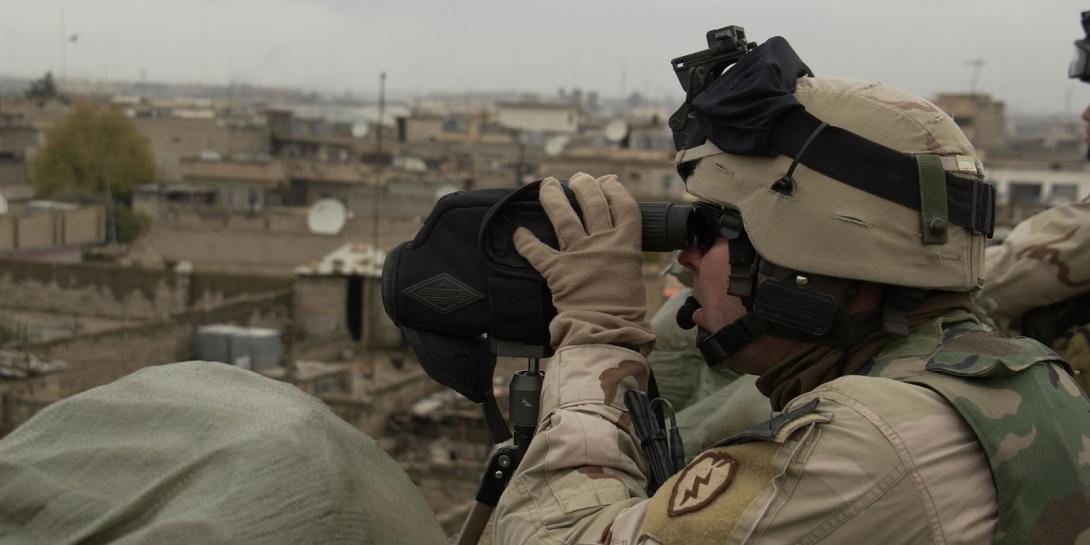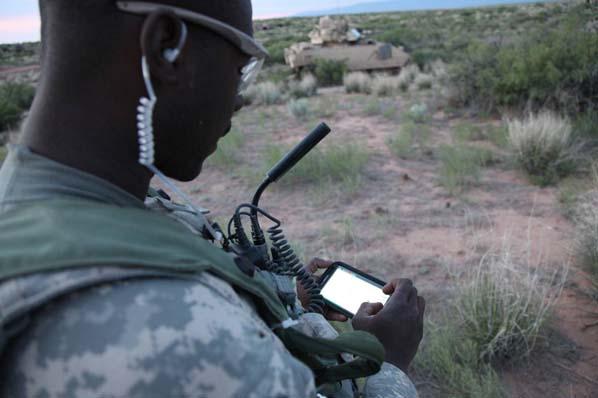Software-Defined Network Needed Sooner Rather Than Later
The U.S. military must adopt a software-defined network to improve agility, flexibility and interoperability with international partners while keeping pace with technological changes, says Lt. Gen. Robert Ferrell, USA (Ret.), former Army chief information officer/G-6.
Owning every piece of hardware is no longer necessary or feasible, says the general, who retired in May. “This legacy environment that we have that is now hardware-based is not going to cut it,” he asserts.
A software-defined network offers a number of benefits, but getting there is no easy task, Gen. Ferrell indicates. “The software-defined network is the way to go, but that’s going to take some time to move in that direction,” he says.
Such a network, he explains, will improve interoperability with militaries from other nations. “We’re not optimized to operate with our mission partners. We worked that [problem] hard, but that’s ... a constant challenge,” the general stresses.
Part of the challenge is a lack of funding. “As you look at not just the Army but also at the Department of Defense and at our international, multinational partners, we all have different hardware. There’s not enough funding to change out everything, to put everything on the same hardware base,” Gen. Ferrell maintains. “To sum it up, a software-defined environment is probably needed tomorrow.”
He clarifies that he means the software-defined network is needed sooner rather than later because it will improve the ability to provide the right level of security and the capabilities required to move data from one point to another. Additionally, a software-defined capability will improve security for weapon systems and enhance communications from combatant commands down to the platoon level.
Despite challenges, the Army is well on its way to a modernized network, he says. The information technology strategy set in motion by Gen. Ferrell’s team largely focuses on consolidating data centers, cloud computing, unifying capabilities through mobility and updating and standardizing home station mission-command capabilities.
The former chief information officer (CIO) says the service “got off to a very good start on data center consolidation.” At one point, the service had 1,500 data centers. It now has 680. The goal is to reduce that as much as possible, but the Army cannot yet define its final number.
The service also has begun transitioning to the cloud with an initiative at Redstone Arsenal, Alabama. Redstone now has 21 data centers, 11 of which belong to the Army. Those 11 are scheduled for consolidation. “We put out for a bid to bring cloud into play and should be on a good path to get there,” the general suggests.
Furthermore, the service seeks to provide data, voice and video capabilities on mobile devices. The devices will “untether soldiers from their office space and vehicles” and ultimately replace some communications systems, Gen. Ferrell predicts. “To me, that’s the first step to integrate both the tactical and strategic communications network,” he says.
The Army also has begun the process of installing Home Station Mission Command Centers at every post, camp and station. The centers will standardize technologies that each divisional headquarters acquired at the onset of both the Iraq and Afghanistan wars. The service installed four new centers last year, the first year of the program, and intends to install at least six each year for the next three years, for a total of 18 across the Army.
Although the service still has too many networks, it is progressing toward one consolidated enterprise network, Gen. Ferrell says. “Just about every major command—Army Materiel Command, the medical community, the military intelligence community—are all on separate and disparate networks. We need to consolidate to have one enterprise. We’re talking about the networks for the active duty, Guard and Reserve. Putting that on one enterprise and getting everyone moving in the same direction is one of the biggest challenges,” he declares.
Along those lines, the one-time CIO reports that the service also is consolidating responsibility for some networks under the Signal Corps. For example, the corps operates and maintains the Army portion of the Secret Internet Protocol Router Network (SIPRNet) and the Non-Classified Internet Protocol Router Network (NIPRNet). Moving forward, the Signal Corps will control the network operated by the service’s Military Intelligence Corps. Gen. Ferrell describes the move as a huge change at the tactical level.
But the proliferation of networks certainly is not the only challenge. “We’re not optimized for expeditionary mission command. You can’t predict where you’re going to fight tomorrow, but your network needs to be expeditionary, from the installation all the way to the forward edge,” he says.
Keeping abreast of technological change also is a concern. “In the blink of an eye, there’s a new capability out there that our users see. It’s great that they see it, but the Army is a large organization. Any one capability that we are trying to acquire, at minimum, takes three to five years to field,” Gen. Ferrell notes. “It’s hard to keep pace with the emerging cyberthreats.”
He stresses the need for partnerships across the service and the department, and with industry and academia, but also between the Army’s signal, cyber, electronic warfare and intelligence domains. “There can’t be any ... space between any of those four,” he declares. “We have to be in marriage together as partners because every element brings a different capability to the table.”
All four need to be “working hand in hand together, intertwined and highly integrated,” he relates, and should be cultivated to reinforce each other because each is a key enabler of the Army mission. “It’s one team, all focused on making sure we have a secure, sound network environment that allows our customers, which is our soldiers and leaders, to accomplish the mission,” he says.
The Army already is taking necessary steps to solidify those relationships. “By coupling the signal school and the Cyber Center of Excellence, we’re already moving in that direction. The Signal Corps will always remain a critical enabler of the network, and we will partner with cyber, intel and electronic warfare as we move forward,” Gen. Ferrell states.
Fostering those partnerships, he suggests, would be one major piece of advice he would offer his successor, if given the chance. “You can’t do it all by yourself. It takes a village,” he says. Gary C. Wang is serving as acting CIO as the vacancy is filled.
Gen. Ferrell also stresses the need for his successor to foster younger generations of talent. And he says this person should prioritize every single element of the network, including modernization, data centers and services to the edge. “Similar to a car engine, every piece and part of that engine is important. Not one is more critical than the other,” he advises.
Editor’s note: The views presented are Lt. Gen. Robert Ferrell’s personal views and not necessarily those of the U.S. Department of Defense or the Army.






Comments